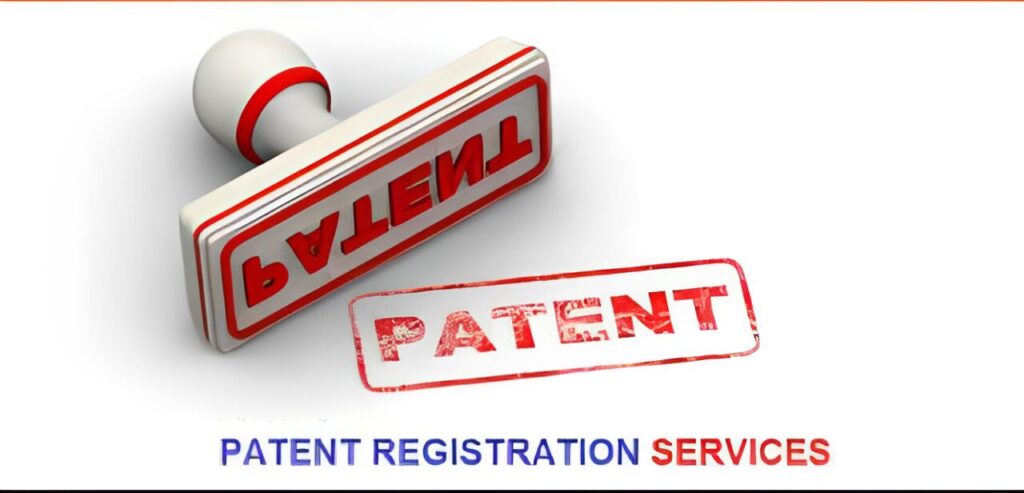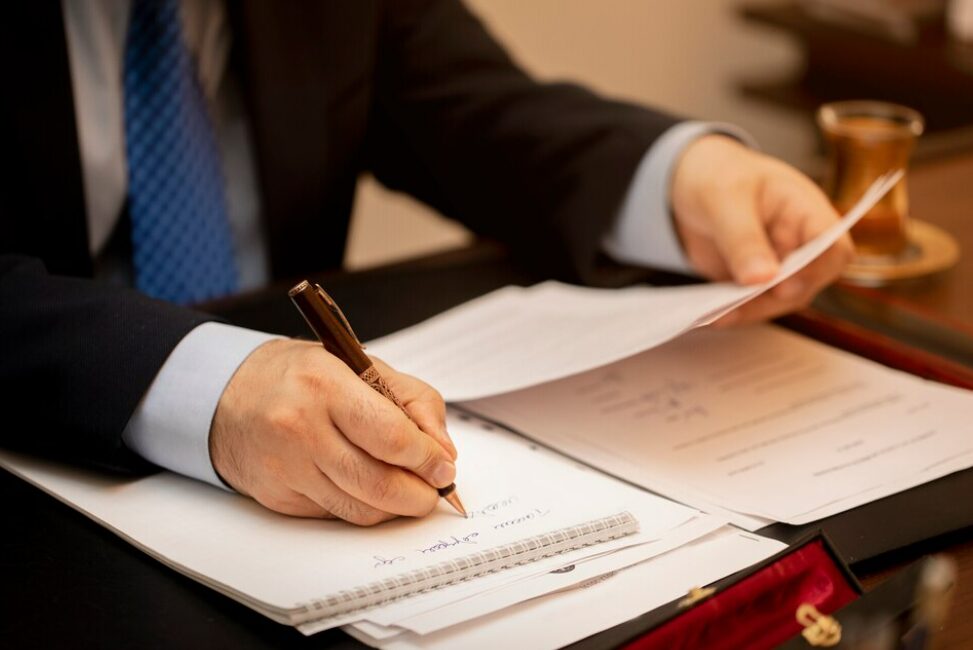Patent Registration
Patent registration in India is governed by the Patents Act, 1970 and is administered by the Indian Patent Office under the Controller General of Patents, Designs and Trademarks, which is part of the Ministry of Commerce and Industry. Here’s an overview of the patent registration process in India

What is a Patent
Exclusive Rights: A patent provides the patent holder with the exclusive right to prevent others from using, making, selling, or distributing the patented invention without permission.
Limited Duration: Patents have a limited duration, typically 20 years from the filing date of the patent application. Once the patent term expires, the invention enters the public domain, and anyone can use it without permission.
Inventions: Patents can be granted for inventions that are novel, non-obvious, and useful. Inventions can include processes, machines, manufactures, compositions of matter, and improvements thereof.
Disclosure: In exchange for the exclusive rights granted by a patent, the patent holder must disclose the details of the invention in the patent application. This disclosure contributes to the body of knowledge in the relevant field.
Territorial Rights: Patents are territorial, meaning that they only provide protection within the jurisdiction where the patent is granted. Inventors typically seek patent protection in multiple countries if they intend to market their invention internationally.
Enforceability: Patents provide legal recourse to the patent holder to enforce their rights against infringers through litigation or other legal means.
Patent in India
Types of Patents: Patents in India can be granted for inventions relating to products, processes, methods, or improvements thereof, provided they are novel, involve an inventive step, and are capable of industrial application. Patents can be obtained for various fields such as pharmaceuticals, biotechnology, electronics, software, mechanical devices, and more.
Duration of Patent Protection: In India, the duration of patent protection is 20 years from the date of filing the patent application, subject to payment of annuities or renewal fees. After the expiration of the patent term, the invention enters the public domain.
Patent Application Process: The patent application process in India involves filing a patent application with the Indian Patent Office. The application undergoes examination to determine patentability criteria such as novelty, inventive step, and industrial applicability. Applicants may also file for expedited examination under certain conditions. Upon successful examination and compliance with all requirements, the patent is granted.
Patent Filing Requirements: Patent applications in India must include a detailed description of the invention, along with claims defining the scope of protection sought. Drawings, if necessary, should also be provided. The application should be filed in the prescribed format and accompanied by the requisite fees.
Patent Enforcement and Protection: Once granted, a patent provides the patent holder with exclusive rights to prevent others from making, using, selling, offering for sale, or importing the patented invention in India without permission. Patent infringement actions can be initiated in Indian courts to enforce patent rights.
Compulsory Licensing and Working Requirements: The Indian Patents Act includes provisions for compulsory licensing and working requirements aimed at ensuring that patented inventions are effectively utilized to benefit the public and promote industrial development in India.
International Patent Cooperation: India is a signatory to international agreements such as the Patent Cooperation Treaty (PCT), which facilitates the filing of international patent applications and cooperation among patent offices of different countries.
What Is Patent Registration
Filing a Patent Application: The inventor or applicant prepares and submits a patent application to the relevant patent office. The application includes a detailed description of the invention, along with claims that define the scope of protection sought. Drawings, diagrams, and other supporting materials may also be included.
Examination by the Patent Office: Upon receiving the patent application, the patent office examines it to determine whether the invention meets the criteria for patentability. This examination typically involves assessing the novelty, non-obviousness, and utility of the invention, as well as ensuring that it is not excluded from patent protection based on certain criteria such as laws of nature, abstract ideas, or natural phenomena.
Publication and Review: Once the patent application is deemed complete and compliant with the requirements, it is published in a patent gazette or database, making the details of the invention available to the public. During this period, third parties may review the application and provide comments or oppositions if they believe the invention does not meet the criteria for patentability.
Grant of Patent: If the patent office determines that the invention meets all patentability requirements and there are no valid objections, it grants the patent to the applicant. The patent certificate confirms the exclusive rights conferred to the patent holder, including the right to prevent others from making, using, selling, or importing the patented invention without permission.
Term of Protection: A granted patent typically provides protection for a specified period, which is usually 20 years from the filing date of the patent application. However, the patent holder must pay maintenance fees or annuities to keep the patent in force throughout its term.
Enforcement and Defense: Once granted, the patent holder can enforce their rights against infringers through legal means, such as litigation or seeking injunctions. Similarly, patent holders may need to defend their patents against challenges or invalidation proceedings initiated by third parties.
International Protection: Inventors seeking global protection for their inventions may file patent applications in multiple countries or regions, either directly or through international treaties and agreements such as the Patent Cooperation Treaty (PCT).
Importance of Patent Registration
Protection of Intellectual Property: Patent registration provides legal protection for inventions, granting the patent holder exclusive rights to use, make, sell, or distribute the patented invention for a limited period, typically 20 years. This protection helps prevent unauthorized use or exploitation of the invention by competitors, thereby safeguarding the investment in research, development, and innovation.
Incentive for Innovation: The promise of exclusive rights conferred by patents serves as a powerful incentive for inventors and businesses to invest time, resources, and effort into developing new and innovative technologies, products, and processes. Patent protection encourages innovation across various industries by rewarding inventors for their ingenuity and creativity.
Encouragement of Disclosure: Patent registration requires inventors to disclose the details of their inventions in a patent application, including the technical specifications, functionality, and potential applications. This disclosure contributes to the body of knowledge in the relevant field, promotes transparency, and facilitates the dissemination of technological advancements for the benefit of society.
Competitive Advantage: Patents provide the patent holder with a competitive advantage in the marketplace by granting them exclusivity and market dominance for the patented invention. This exclusivity allows inventors and businesses to capitalize on their inventions, capture market share, command premium pricing, and generate revenue streams through licensing agreements or commercialization efforts.
Monetization and Commercialization Opportunities: Patents can be valuable assets that can be monetized, licensed, or sold to generate revenue and maximize returns on investment. Patent holders can leverage their intellectual property portfolios to enter into licensing agreements with third parties, collaborate with industry partners, attract investment capital, and explore opportunities for technology transfer and commercialization.
Legal Recourse Against Infringement: Patent registration provides the patent holder with legal recourse to enforce their rights against infringers who engage in unauthorized use, manufacture, sale, or distribution of the patented invention. Enforcement actions may include litigation, seeking injunctions, and pursuing damages or royalties for infringement.
Promotion of Economic Growth and Development: Patents play a vital role in driving economic growth, fostering technological progress, and stimulating innovation-driven economies. Patent-intensive industries contribute to job creation, productivity gains, competitiveness, and overall economic prosperity by spurring investment in research and development, fostering entrepreneurship, and promoting knowledge-based industries.



Eligibility Criteria for Patent Register
Novelty: The invention must be new and not previously disclosed or made available to the public anywhere in the world before the filing date of the patent application. Any prior disclosures, publications, or public uses of the invention may impact its novelty.
Inventive Step (Non-Obviousness): The invention must involve an inventive step, meaning that it cannot be obvious to someone skilled in the relevant technical field based on the existing knowledge or prior art. The invention should represent a significant advancement or departure from existing technologies or solutions.
Industrial Applicability: The invention must be capable of industrial application, meaning that it should have practical utility and be capable of being made or used in some kind of industry or field of technology.
Subject Matter Eligibility: The invention must fall within the statutory subject matter eligible for patent protection. Typically, patents can be granted for inventions related to processes, machines, manufactures, compositions of matter, or improvements thereof. Certain categories of inventions, such as abstract ideas, laws of nature, and naturally occurring substances, may not be eligible for patent protection.
Enablement: The patent application must enable a person skilled in the relevant technical field to understand and reproduce the invention without undue experimentation. The application should provide a clear and complete description of the invention, along with any necessary drawings, diagrams, or examples.
Disclosure Requirement: In exchange for patent protection, the inventor must disclose the invention in sufficient detail in the patent application, including the best mode of practicing the invention known to the inventor at the time of filing.
Unity of Invention: The patent application should relate to a single invention or a group of closely related inventions, ensuring unity of invention. The claims in the patent application should be directed to the same inventive concept or inventive contribution.
Non-Patentable Subject Matter Exclusions: Certain subject matter may be excluded from patentability, including inventions that are contrary to public order or morality, methods of medical treatment performed on humans or animals, and inventions that are solely based on mathematical algorithms or mental processes without any technical application.
Documents for Filing Patent Registration Application
Title of the Invention: A clear and concise title that accurately reflects the nature of the invention.
Specification: A detailed description of the invention, including its technical features, components, operation, and any advantages or improvements over existing solutions. The specification should enable a person skilled in the relevant technical field to understand and reproduce the invention.
Claims: The claims define the scope of protection sought for the invention. They specify the particular features or elements that the patent applicant considers to be inventive and wishes to protect from infringement.
Drawings: If applicable, drawings or diagrams illustrating the invention may be required. Drawings help clarify and supplement the written description of the invention, particularly for inventions involving complex structures or processes
Abstract: A brief summary of the invention that highlights its key features and technical aspects. The abstract provides a concise overview of the invention for the benefit of patent examiners and the public.
Information About the Applicant(s): Details about the applicant(s) or inventor(s), including their full name, address, nationality, and contact information.
Priority Information (if applicable): If the application claims priority to an earlier-filed application (e.g., a priority application filed in another country), relevant priority information must be provided, including the filing date and application number of the priority application
Power of Attorney (if applicable): In some jurisdictions, a power of attorney authorizing a patent attorney or agent to represent the applicant in the patent application process may be required.
Filing Fees: Payment of the required filing fees or charges associated with the patent application.
Declaration or Oath: A declaration or oath signed by the inventor or applicant confirming the authenticity of the invention and their right to seek patent protection.
Translations (if applicable): If the patent application is filed in a language other than the official language of the patent office, translations of the application documents may be required.
Documents for Filing Patent Registration Application
Title of the Invention: A clear and concise title that accurately reflects the nature of the invention.
Specification: A detailed description of the invention, including its technical features, components, operation, and any advantages or improvements over existing solutions. The specification should enable a person skilled in the relevant technical field to understand and reproduce the invention.
Claims: The claims define the scope of protection sought for the invention. They specify the particular features or elements that the patent applicant considers to be inventive and wishes to protect from infringement.
Drawings: If applicable, drawings or diagrams illustrating the invention may be required. Drawings help clarify and supplement the written description of the invention, particularly for inventions involving complex structures or processes
Abstract: A brief summary of the invention that highlights its key features and technical aspects. The abstract provides a concise overview of the invention for the benefit of patent examiners and the public.
Information About the Applicant(s): Details about the applicant(s) or inventor(s), including their full name, address, nationality, and contact information.
Priority Information (if applicable): If the application claims priority to an earlier-filed application (e.g., a priority application filed in another country), relevant priority information must be provided, including the filing date and application number of the priority application
Power of Attorney (if applicable): In some jurisdictions, a power of attorney authorizing a patent attorney or agent to represent the applicant in the patent application process may be required.
Filing Fees: Payment of the required filing fees or charges associated with the patent application.
Declaration or Oath: A declaration or oath signed by the inventor or applicant confirming the authenticity of the invention and their right to seek patent protection.
Translations (if applicable): If the patent application is filed in a language other than the official language of the patent office, translations of the application documents may be required.
